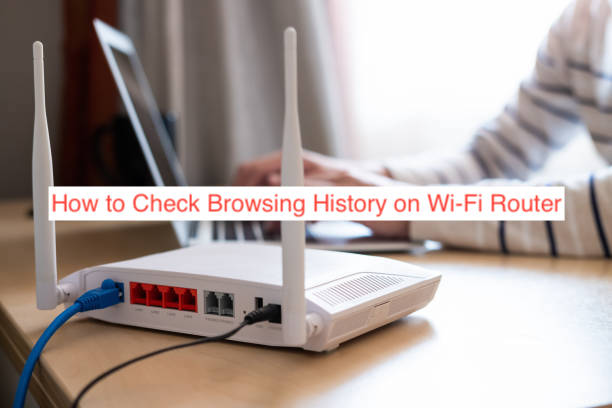Your Wi-Fi router might seem like a harmless device that does nothing more than send network packets to your other gadgets to keep them constantly connected to the internet. However, watching more programming movies now makes you aware that you can check your browsing history on a router.
It’s possible to check your browsing history from a router, but you don’t even want to do that. The reason is simple: there are hundreds of ways to check your browsing history without touching your router; why insist on torturing the poor little guy for no reason?
However, the reason people do most things isn’t actually because they need to, it’s because they can. To show you you can, this article will go over how to check browsing history on Wi-Fi router and how to delete it.
How to Check Browsing History on Wi-Fi Router
If you’ve been using the internet for over a month, you should already know hackers can get your browsing history by simply hacking into your router. For that to be possible, it’s only logical to deduce that routers keep a log of your browsing information for some reason.
Unsurprisingly, it seems that routers indeed do log your browsing history, and it’s not necessarily hidden as safely as you imagine. As long as someone can connect to your Wi-Fi network, they can always check everything you know, or even don’t know about your browsing history.
With that said, here’s how to access your browsing history from a Wi-Fi router on a computer connected to the network.
- Get the router’s IP address
The first step to checking your browsing history from a router is finding the router’s IP address that all connected devices share. While the private IPs of all devices in a network are always different, they can share the same public IP when they all connect to a specific router.
In most cases, the IP address should be available at the back of the router or on the manual. If the numbers appear inaccessible from those locations, there are alternate ways to get your IP address to check your browsing history.
First, you can head over to System Preferences if you’re on a Mac. From there, you can head over to Network settings and then the Wi-Fi option. From there, you should find a list of the IP addresses of the routers you’ve connected to over the years.
If you’re on Windows, however, you can achieve the same by heading to Network settings from a Windows computer and clicking on Wi-Fi. From there, you should see your IP written next to the IPv4 address label.
- Log in to the router’s Wi-Fi dashboard
The whole point of finding out the IP address is to use it in logging into the router’s dashboard. There are many prerequisites before you can log into your router’s Wi-Fi dashboard. Firstly, you must have a computer and that computer must be also connected to the Wi-Fi network during the exercise.
If you use one of the mainstream router brands, it should have a pretty good dashboard where you can access a bunch of information about your usage. When you try to access the dashboard, you may have to log in with your username and password.
To get to the login page for your router dashboard, you can simply paste the IP address you copied from earlier into any browser on your computer. You should see a login page come up; enter your SSID and password from there to gain access to the dashboard connected to the router.
- Review your browsing history
After gaining access to the dashboard, you can always view your internet browsing logs using the slew of controls on the page. There are many ways to check the browsing history; you can browse the list of devices on the network to choose which one you’re planning to check its history.
When you try to check your browsing history on a Wi-Fi router, there’s a limit to what you can see from the dashboard. You can see information like the date and time of the visit, the IP address of the website visited, whether or not the request was allowed, and the private IP of the device that initiated the connection.
While this may seem cool, it poses a serious security risk if you’re using a router that isn’t yours for sensitive internet browsing. To prevent anyone from snooping on your browsing history, you may want to delete it totally to remove it from the logs. The following section will show you how.
How to Delete Browsing History on Wi-Fi Router
If you’re near the Wi-Fi router, you can simply press the reset button to delete your browsing history without impacting other parts of the router like the username and password. A quick press should delete the browsing history to make it untraceable for the network administrator.
However, there’s always a good chance that you can’t even access the router physically. In that case, you may want to clear it directly from the logs when viewing it from your browser. Typically, you can choose to delete the logs for specific devices or delete everything the router has collected altogether.
If you browse sensitive content with your computer, deleting your browsing history from time to time seems like a great idea. Remember, it’s easier than you think to access your history without your permission.
Conclusion
Who says Chrome is the only place where you can access your browsing history. If you didn’t know before now, your Wi-Fi router also collects your history, and you can view it by logging into your dashboard using your username and password.
After logging in, you can choose to clear the browsing history by clearing the logs. Most routers will let you clear the logs for a specific device and you can also delete everything the device has collected if that’s exactly what you’re after.

